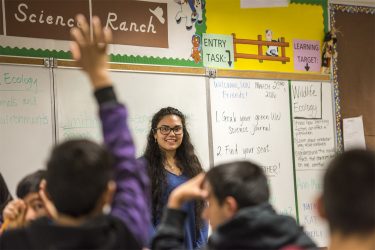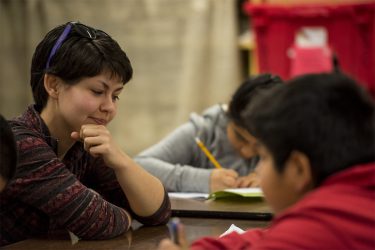
For UW students involved in the Pipeline Project, spring break means teaching in classrooms across Washington. In March 2016, Environmental and Forest Sciences‘ undergrad Ann Margaret Stompro, Natalie Gray, and Kat Schaffer taught environmental science to sixth graders in the small town of Brewster, Wash.
Situated at the confluence of the Columbia and Okanogan rivers in north central Washington, Brewster is surrounded by rolling hills and acres of apple orchards.

Many migrant workers moved to the area, and today about 72 percent of the town’s 2,300 residents are Latino. The kids from the migrant families are inquisitive and motivated, with dreams of becoming marine biologists, chefs, and veterinarians. And through ASB, the UW students bolster the belief that they can make those dreams a reality.
Utilizing a mix of classroom lessons, small group discussions and outdoor activities (the clear favorite), the UW students spent the week teaching the sixth graders about environmental science. This year, the curriculum was based on the theme “The land we live in,” pertaining to the natural habitat in Brewster.
Since 2001, more than 700 UW undergraduates have volunteered in schools across the state; this year, 60 Huskies spread out among 14 rural and tribal communities from the Olympic Peninsula to Eastern Washington.
Read more at UW.edu »
